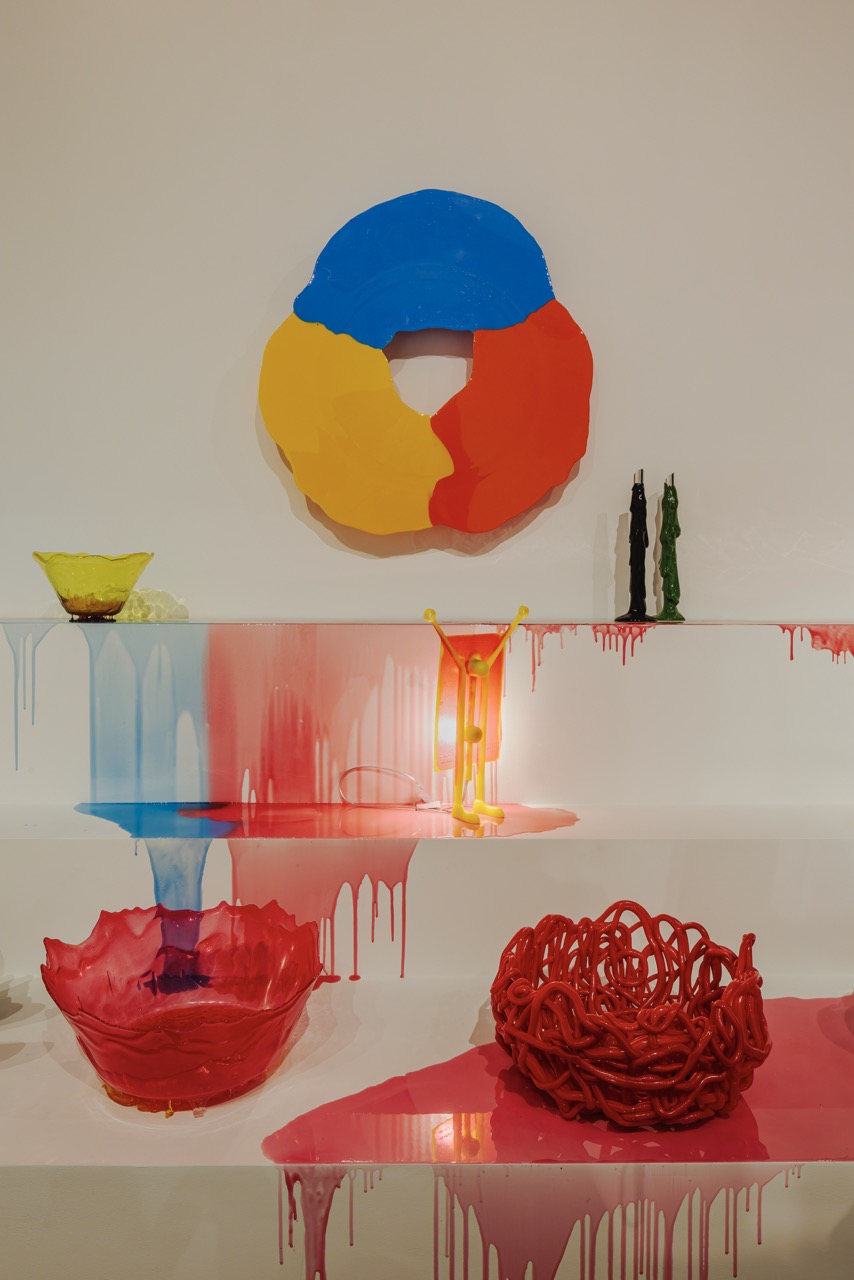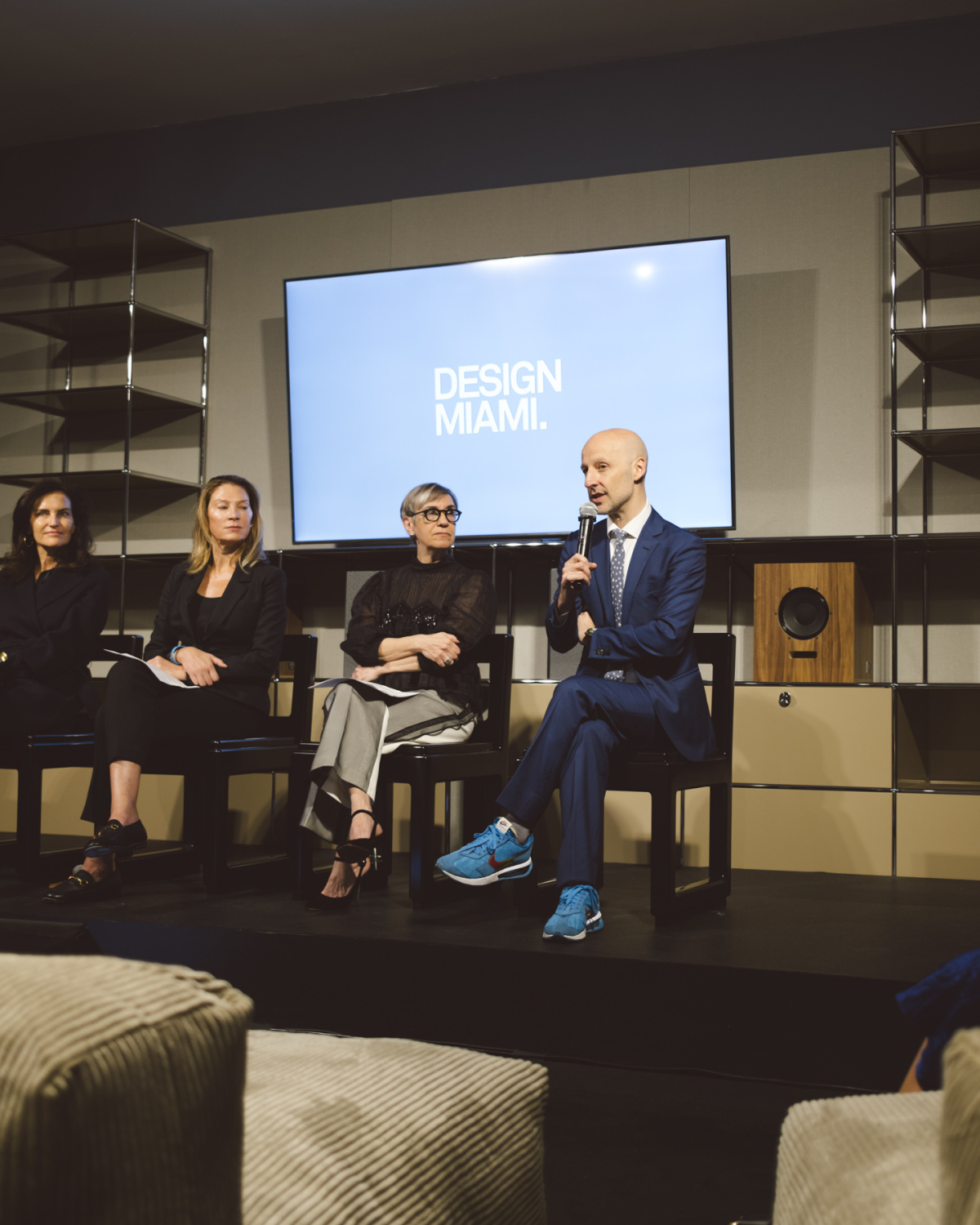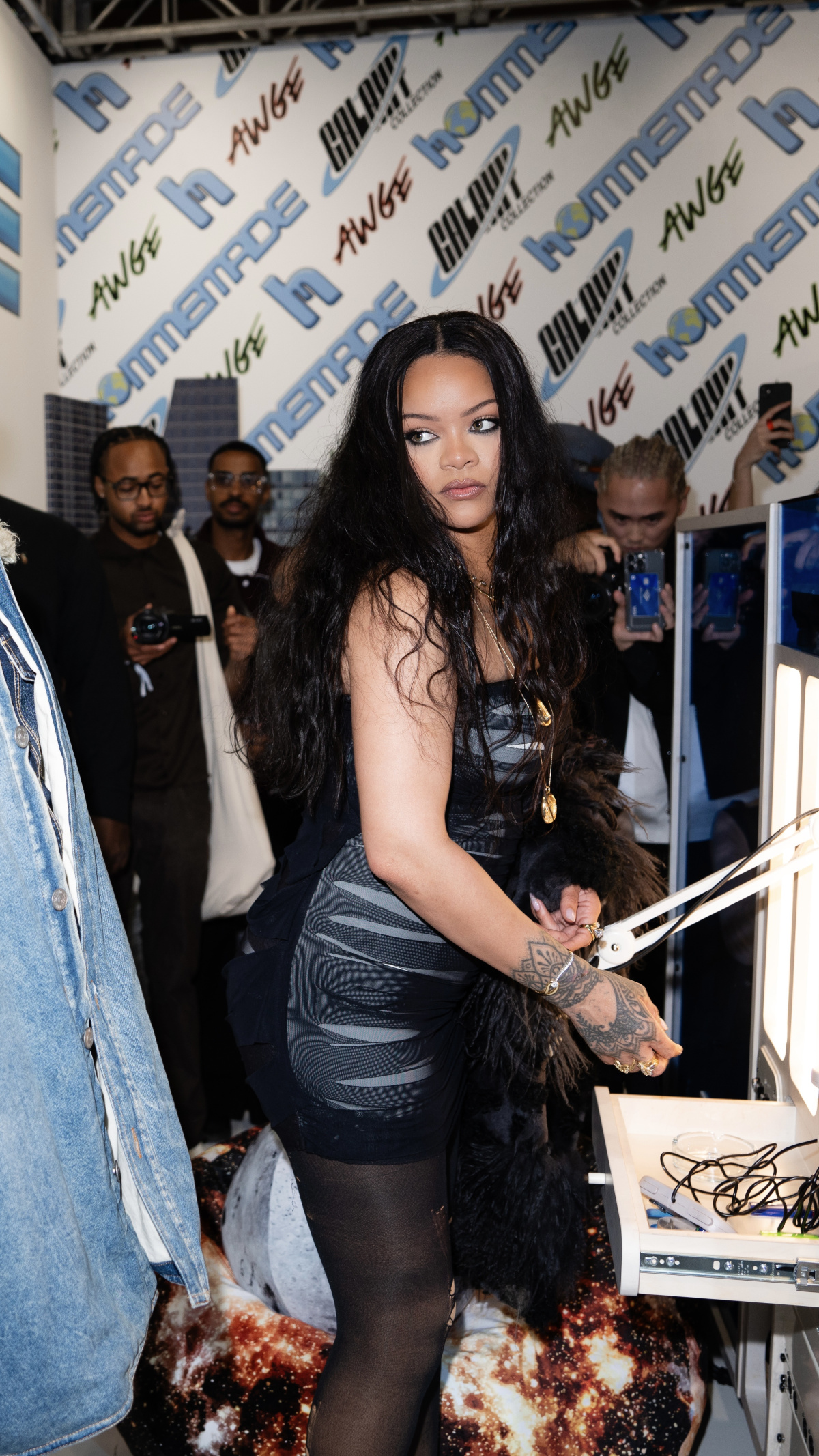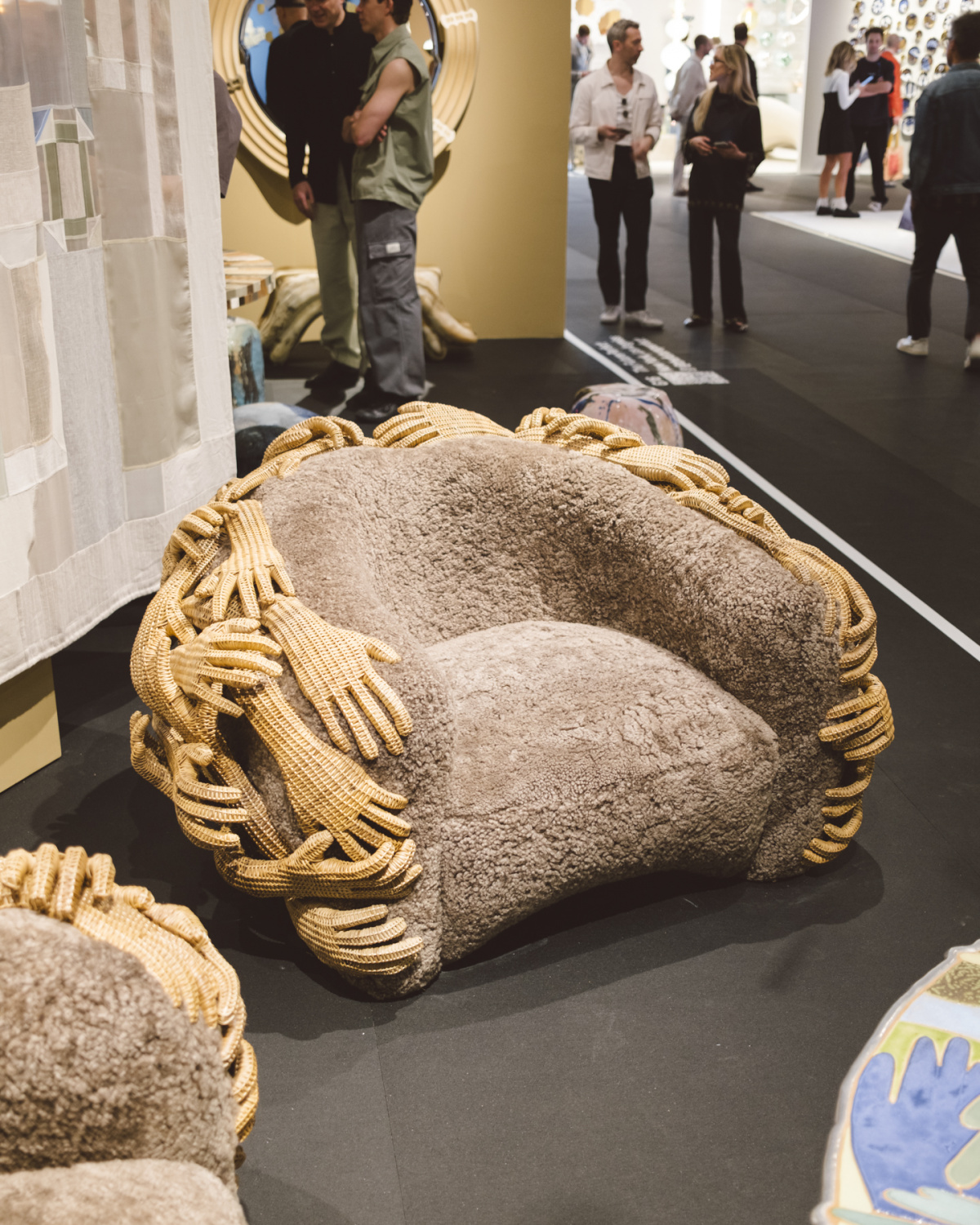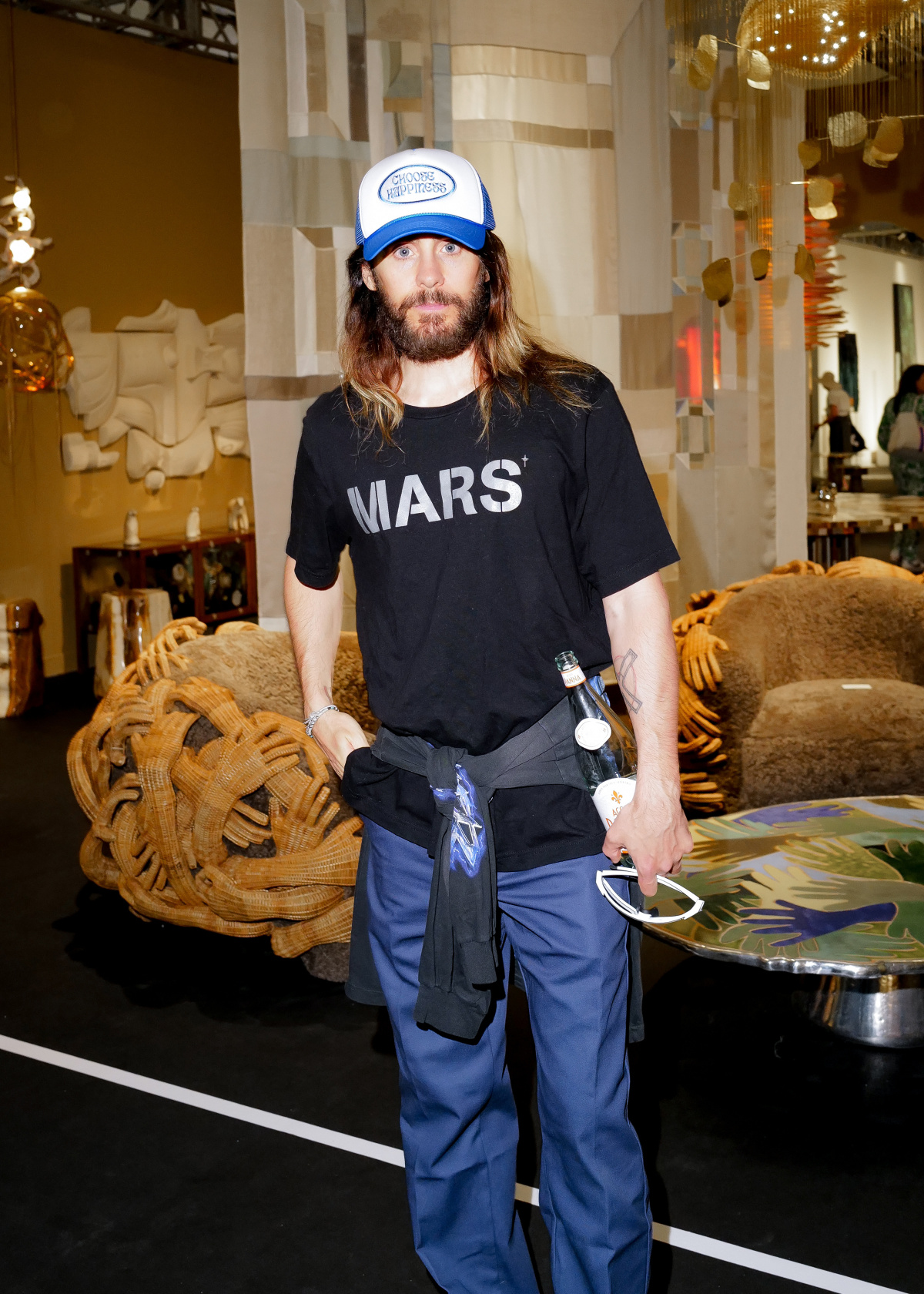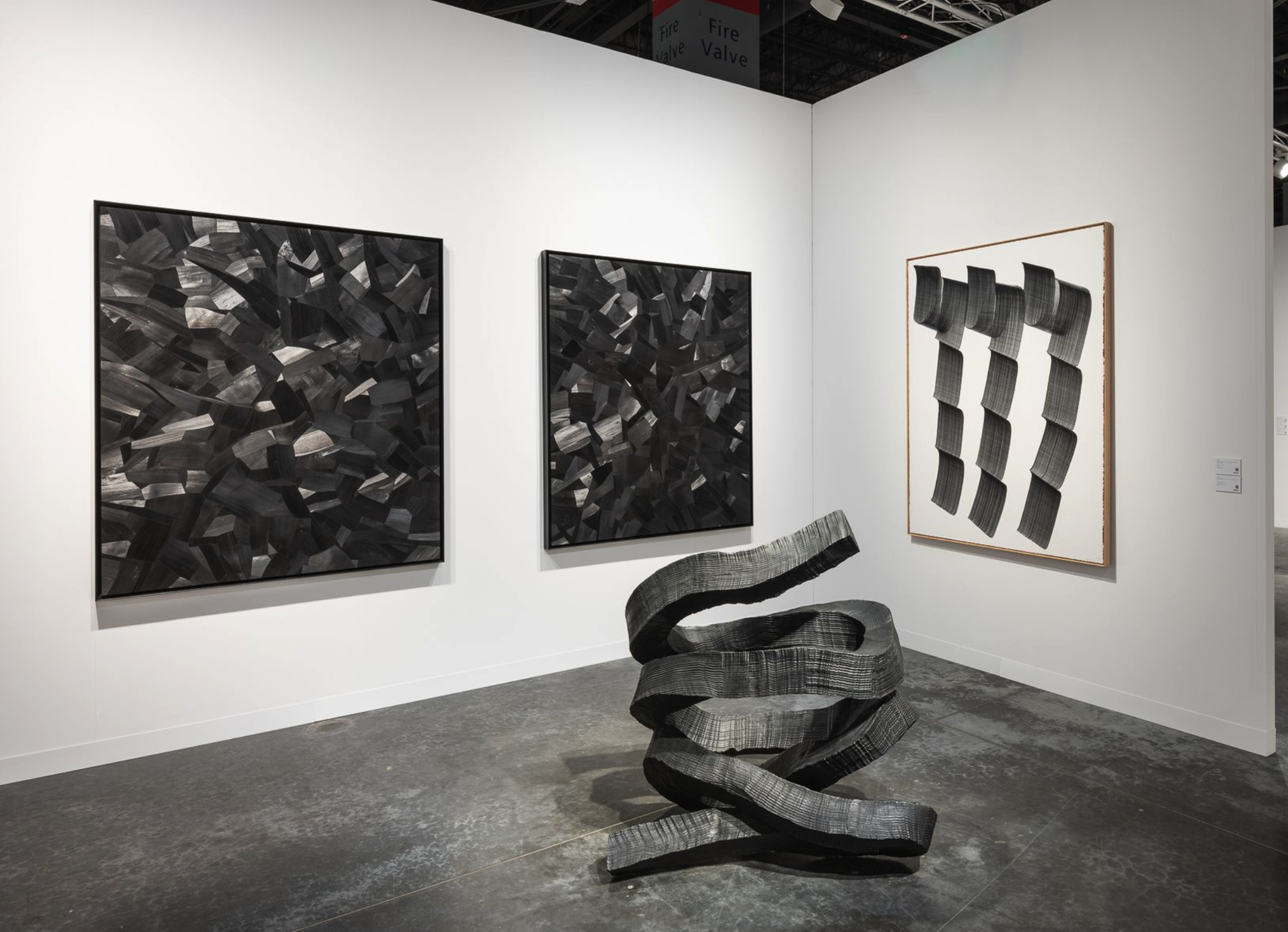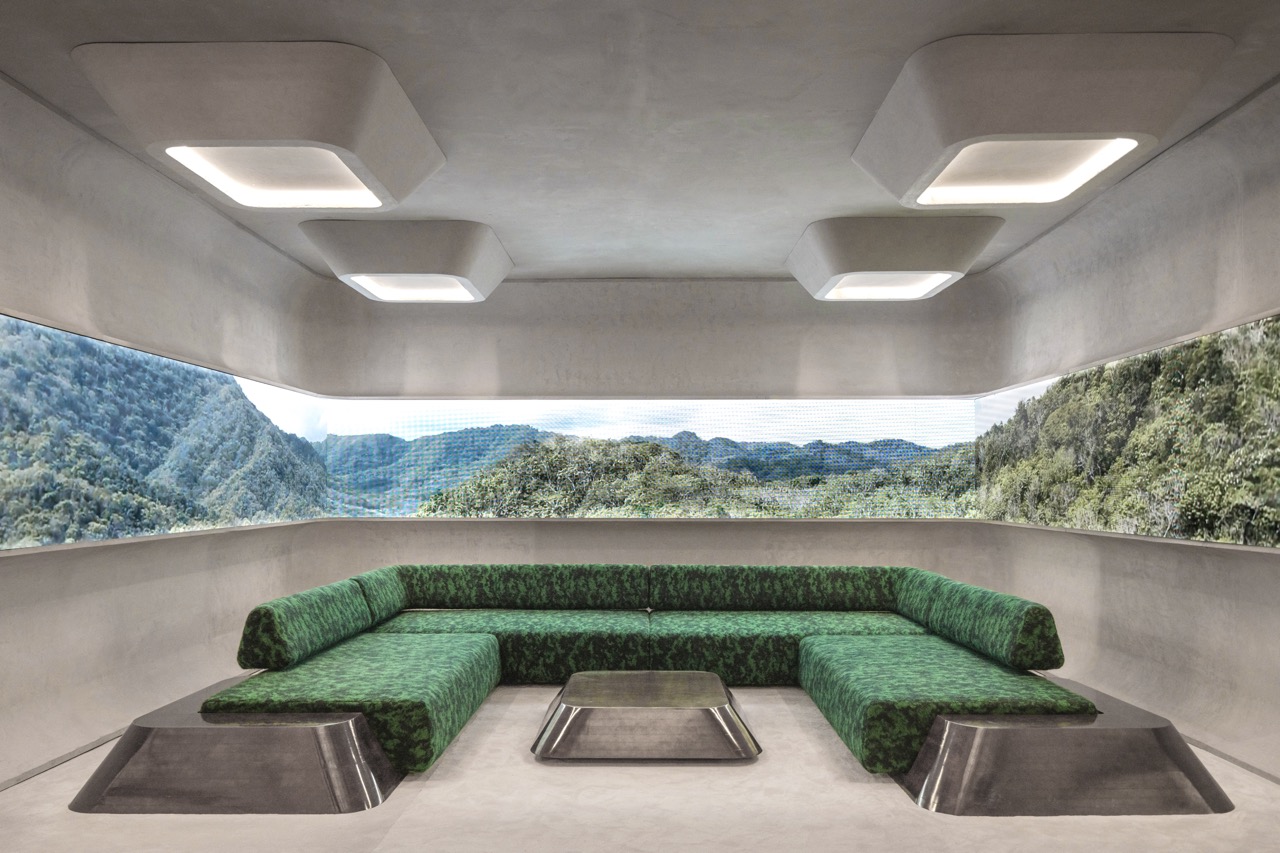Design Miami is probably the most important, or at least the most interesting, design fair happening in the US.
The fair is held right across the street from Art Basel Miami, the anchor show for Miami Art Week, and a hub of bustling, chaotic, commercial energy. So it’s surprising that a fair focused on design—rather than pure art—feels much more creative and calmly composed than its art-focused neighbors.
When I arrived at the fair this year that’s exactly what I brought up to this year’s curator, Glenn Adamson.
“I’ve attended Design Miami for years but until I really got involved, it hadn’t occurred to me that it’s the opposite of what you’d expect. This seemingly more commercial space is actually more avant-garde,” he says.
“When the art fair model came along 20 or 30 years ago, many people in the art world saw fairs as a necessary evil, or even as the death of the avant-garde. But design fairs like this have been the platform that enabled a design avant-garde to exist.”
As we continued talking, Glenn noted that the fair has become something of a homecoming for the American design community, which lacks a single, defined hub like the art world has in New York.
“In New York, you’ve got Chelsea and a critical mass of art galleries. But with design, without a fair like this, there wouldn’t be a comparable platform. Design is challenging because it’s expensive and comes with practical considerations that art doesn’t have. It needs a platform like this. That’s what Design Miami has been,” Glenn says.
Glenn was responsible for coming up with the “blue sky” curatorial theme this year, “I thought the concept of ‘Blue Sky’ would be something everybody could respond to in their own way.” Exhibitors are not required to respond to the curatorial theme, but most do in some way.
Here’s what stood out to me at the show.
- Florence Louisy, artistic director, Æquo
- Photo courtesy of Design Miami / Kris Tamburello
One of my first stops was to meet with Florence Louisy who is the artistic director at Æquo Gallery in Mumbai.
India is a huge, massive, important country I know very little about it so it was nice to get a brief crash course on some of the interesting design things happening there.
She told me how the ban on leather there put an entire community of skilled craftspeople out of work, so artist Sudheer Rajbhar from Chamar Studio devised a way to use leather working skills on sheets of rubber.
The Flap chairs were a huge stand out at the show, even Rihanna took a minute to sit on one.
Above the red chair on the right is the SLABS Cabinet by Linde Freya Tangelder made from German silver, teak wood, and welded with brass finishings. It’s even more impressive in person.

Stefon Diggs. Photo courtesy of Design Miami / Jason Lowrie
OK, Stefon Diggs liked the Flap chairs too.
- Objective Gallery. Photo courtesy of Design Miami / Kris Tamburello
- Sam Klemick. Photo by Chris Force
Objective Gallery showed the Big Wooden Bell chair from one of our favorite designers Sam Klemick. Sam scoured Los Angeles to salvage scrap wood, then worked piece by piece at a friend’s CNC shop to create a chair completely upholstered in wood. It’s beautiful.

Rodrigo Caula and Enrico Pietra of NUOVA. Photo by Chris Force
Venice Beach-based design group NUOVA’s “Time Travel, 1971,” transports visitors back to 1970s Americana. They built a small apartment visitors could enter that was partly inspired by time spent in Joshua Tree. The exhibit combined furniture, lighting, music, and fragrance to create a nostalgic exploration of a bygone era. “For myself and co-founder Rodrigo Caula, the ’70s was the last era where people looked positively toward the future,” co-founder Enrico Pietra told me.
- David Giroire of Theoreme Editions. Photo by Chris Force
- Photo courtesy Design Miami / Kris Tamburello
I’ve admired David Giroire‘s career for a bit, so it was great to finally meet him. His background was at Dior Homme working with Hedi Slimane. He went on to start a successful PR firm and now has partnered with Jerome Bazzocchi to run Theoreme Editions—a gallery focused on publishing unique work from European designers, like the SISTEMA modular sofa from Pool Studio he’s sitting on above.
He was really friendly, I liked his boots. We first got turned onto Theoreme Editions when they published the Constantin Benches by Francesco Balzano (seen here on the far left, now with a table version.) On the right is the Pleat Console by Victoria Wilmotte and a chair by Exercise. They are making really interesting work.
- Herbarium by Lasvit.
- Designer Maria Čulenová. Photo by Chris Force
OK, so you have to see this one in person to be impressed by it. This was the first time the Czech brand Lasvit has shown at Design Miami—and what they did was really creative. Their lead designer Mária Čulenová-Hostinová worked with their team to recycle “rare lanthanide oxides.”
I don’t know what that means—but they come from old magnets. Anyway, it gives these glass sculptures the ability to change color in different sources of light. Maria pressed organic materials into each piece of molten glass, so no two are alike. In person, these subtle shifts in color and texture create an atmosphere that these photos did not capture.

Nick Thomm. Photo by Chris Force
Nick Thomm is from Australia. He told me he splits time between Melbourne and Los Angeles, “to avoid winters as much as possible.” His work is shiny and colorful and added an approachable, playful energy to the show.
His background is as a graphic designer, but he transitioned to making art full-time in part due to an early celebrity client—Miley Cyrus.
- Mathieu Lehanneur. Photo by Chris Force
- Photo courtesy of Design Miami / Leandro Viana
When I photographed Mathieu Lehanneur earlier this year he was also wearing all white. I’m just realizing this is kind of his thing, like Phillipe Starck with the suit jacket and hoodie, or Piero Lissoni‘s round glasses.
He has had a big year. He was named designer of the year by Maison&Objet and designed the Olympic torch.
I have become a huge fan of his work, partly for this ambition of staying on an “ongoing quest to capture what cannot be.” For Design Miami he created Flower Season, a sprawling exhibition of handmade ceramic flowers, frozen in space.
His most powerful work, prominently displayed at the entrance to the fair, was his Paradise cabinet based on his installation Tomorrow is Another Day for a hospital in France.
“They commissioned me to make something for their palliative care department. I developed an object that is basically an artificial window that they installed in every single patient’s room. That way they could be connected with every sky they want to be connected with.
This could be according to the place where they’re born or the place where their relatives are living, they can be connected with the same sky. Even for the very last moment of their life. In my opinion, it’s a way to freeze time and make life longer,” Mathieu told me.
It took me a while to digest what he told me. I went back to stare into the Paradise cabinet and it was extremely powerful.
Then my mind wandered to that part in the David Spade movie Joe Dirt where he talks about staring at the same moon as his parents, and it kind of killed the vibe. Or maybe it improved the vibe. I don’t know. It’s important not to take yourself too seriously even if you are making serious work.
- Photo by Chris Force
- Photo courtesy of Design Miami / Kris Tamburello
As always at Design Miami there were a lot of colorful things in a mix of blobby or carved shapes. David Gill showed this wild red “armchair” by design duo Fredrikson Stallard called Species 2 made from steel and rubber. It’s part of the permanent collection at SFMOMA.
Meritalia put together a drippy collection of the late Gaetano Pesce‘s work that continues to surprise viewers.
- Photo by Chris Force
- Katya Tolstova. Photo courtesy Design Miami / Yvonne Tnt
Designer James De Wulf showed off some of his work in concrete like this Petal Ping Pong dining table from his Flower Child series.
On the left one of James’ collaborators Rocky Morton demonstrates the table while model Katya Tolstova added a sense of style and spectacle.
- Photo by Chris Force
- Photo by Chris Force
R&Company showed Katie Stout’s ceramic lamp from her Girl series and Hostler Burrows showed this fun ceramic sculpture from Carlos Otero.
- Photo by Chris Force
- Photo by Chris Force
Design Miami held a series of interesting talks (which can be watched here.) Above, curator Glenn Adamson spoke to journalists about this year’s Blue Sky theme. A select group of leading magazines were distributed on the VIP preview days.
- Rihanna. Photo courtesy of Design Miami / @Berting_Photography
- Photo by Chris Force
- A$AP Rocky. Photo courtesy of Design Miami / @Berting_Photography
Hommemade is A$AP Rocky‘s line of homewares. He showed a carpet inspired by the New York City skyline in collaboration with Gufram and the CBNT.V1 a retro speaker cabinet, which was surprisingly cool.
- Celebrity tattoo artist Dr. Woo. Photo courtesy of Design Miami / Jason Lowrie
- Photo courtesy of Design Miami / Kris Tamburello
Celebrity tattoo artist Dr. Woo wore his sunglasses indoors, which is a thing again. I thought this black bookshelf by Pierre Bonnefille shown by Les Ateliers Courbet would be just his style.
- Photo by Chris Force.
- Jared Leto. Photo courtesy of Design Miami / Jason Lowrie
Designer Chris Wolston showed his fantastic Touch Me Feel Me chairs at The Future Perfect booth. I think Jared Leto liked them too. Here he is standing in front of them wearing his own band’s t-shirt. Good for him. He was also drinking straight from the big glass Acqua Panna glass bottle, which is a thing we all find ourselves having to do sometimes, but it’s really unpleasant.
- David Macklovitch and A-Trak. Photo courtesy of Design Miami / Jason Lowrie
- Joe Jonas. Photo courtesy of Design Miami
Here’s Dave 1 from Chromeo with A-Trak. These guys are too handsome. They are standing in front of an installation by Bottega Veneta lounge chairs. The installation was a total failure, the staging was confusing—visitors weren’t sure if they could sit on them. A more open, explicitly inviting setup might have turned this into a coveted seating area and social media hotspot, especially considering the fair’s limited seating options.
Oh, and here is Joe Jonas in the collector’s lounge.
- Photo by Chris Force
- Photo by Chris Force
Two things I would love to live with: Fernando Laposse’s Hairy Dog Furry bar cabinet shown by Friedman Benda and one of these great lamp sculptures from Anna Karlin.

Photo courtesy of Victoria Yakusha
Ukrainian designer Victoria Yakusha exhibited her Grun’ collection of furniture inspired by mystical forests.
- Photo courtesy of Gallery Fumi / Stephanie Aboudaram
- Photo courtesy of Gallery Fumi / Stephanie Aboudaram
Last on my visit was the exhibition by Gallery FUMI who showed this vivid blue Contra Naturam bookshelf by Tuomas Markunpoika and this woven hanging by Kustaa Saksi made from Japanese washi paper yarn.
The next edition of Design Miami will be curated by Glenn Adamson in December 2025. Visit designmiami.com for more info.












